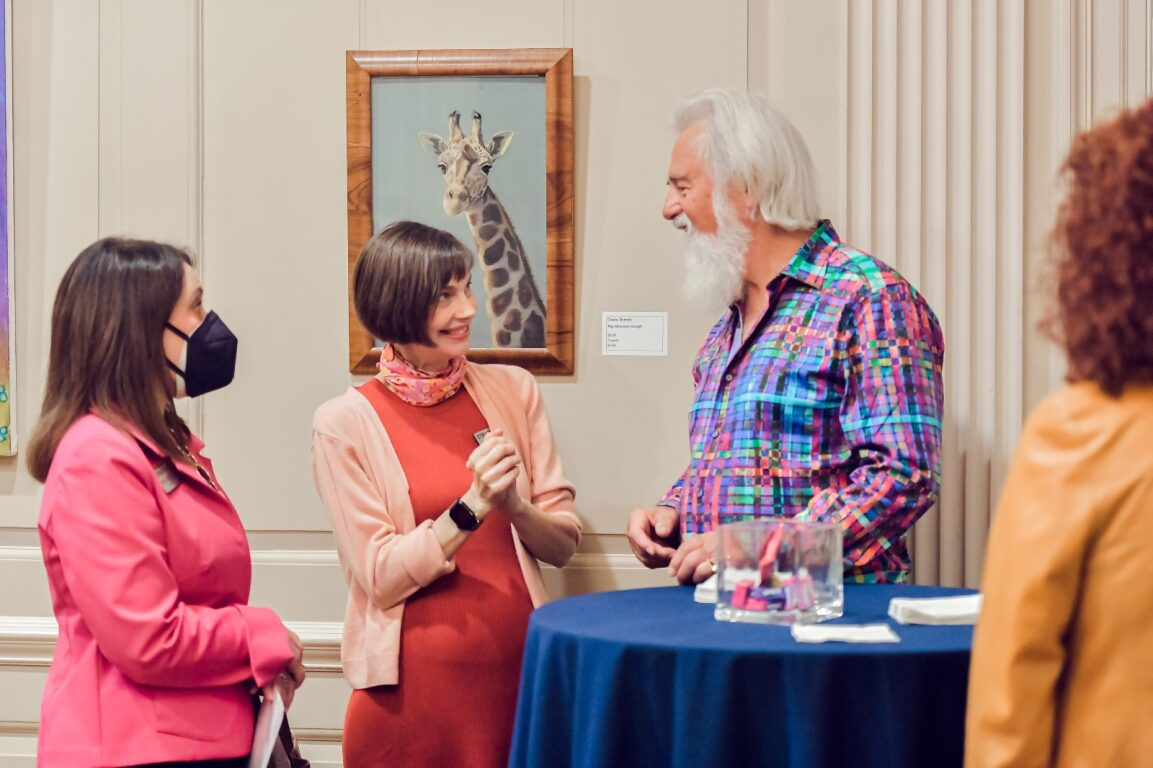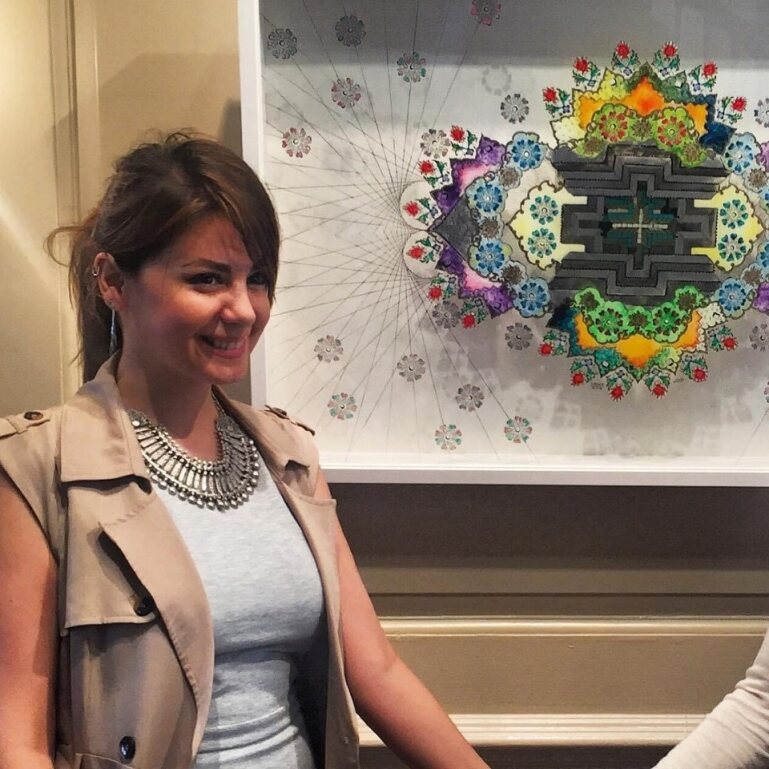Beyond the Winner's Circle
Juried exhibitions foster artistic evolution—and not just for the winners.
by Kate Oczypok
An invaluable platform for local and regional artists to promote their talent, juried exhibitions can set artists on a path to success. They can also serve as catalysts for artistic growth and community engagement, even for artists whose work isn’t accepted into a show.
“We think of our juried exhibitions as one of the many ways to assist artists,” says Lesley Morris, director of Strathmore’s Mansion Galleries. “When artists reach out with questions, we can provide them helpful tips on how to enhance their submissions or refine their artistic vision.”
Earlier this year, Strathmore hosted its 32nd annual juried exhibition, Prism. The theme challenged artists to explore the communicative power of color across a wide range of media, subjects, and styles. Morris was particularly interested in seeing innovative uses of color combinations.
“While commercials and advertising often tell us what colors are ‘trendy,’ artists who combine unconventional colors like orange and gray or turquoise and lime demonstrate that color theory is flexible,” she says. “Nothing should necessarily be ‘in’ or ‘out.’”
Strathmore exhibitions typically have single-word titles like Prism. Cathy Abramson, a local representational oil painter, has participated in several shows, including one called Touch. She appreciates the open-ended nature of these themes, which are intended to spur the imagination.
One of Morris’s favorite shows was the 2019 juried exhibition, Night, featuring depictions ranging from abstract to realistic across various media.
“I was surprised by how artwork dealing with darkness requires careful consideration of light source, resulting in unexpected elements among the participating artists,” she says.
When considering jurors for these exhibitions, Morris prioritizes individuals with a background in art who understand the complexities of various mediums, such as clay, fiber, glass, and watercolor. She also seeks jurors knowledgeable in design theory, including composition, size, rendering, and rhythm.
Furthermore, Morris values jurors who appreciate artists as a community and recognize the importance of encouraging individual artistic expression.
“We want people sensitive to artists submitting for the first time,” Morris says. “I never want to work with anyone who disparages such attempts. It takes courage to share artwork revealing personal emotions and ideas.”
While there is an entry fee for all juried exhibitions, Morris notes that Strathmore’s fees are affordable—typically around $30 for submitting up to eight pieces. Proceeds support visual arts at Strathmore, including more than a dozen free exhibitions every year and free or low-cost companion programming. Additionally, these exhibitions have a long-standing history of awarding cash prizes; Strathmore awards a combined total of $900 in prize money to the recipients of the best in show, second, and third prizes.
Abramson, who enjoys painting local scenes, cityscapes, and interiors, has never won a prize at Strathmore’s juried exhibitions. Despite this, she always feels supported by Morris, jurors, and fellow artists alike. “Lesley and I have had art conversations during painting drop-offs and by email,” she says. “She even came to a special preopening event for a show that I was in at the Phillips Collection.”
Ladan Ebrahimian, a local artist specializing in glass painting, has also participated in numerous Strathmore shows, including the 90th Annual International Exhibition of Fine Art in Miniature in 2023. She views Strathmore’s opening night receptions as valuable opportunities for artists to engage with curators and jurors. At one event, a juror curating another show invited Ebrahimian to give a talk at a DC think tank, an example of how juried shows can open other opportunities for artists.
“Juried shows are a great way for artists to have their work evaluated and recognized by experts in the field,” she says.
Abramson agrees. “You have to get yourself out there,” she says. “There’s no reason why you should have all your paintings under your bed.”


